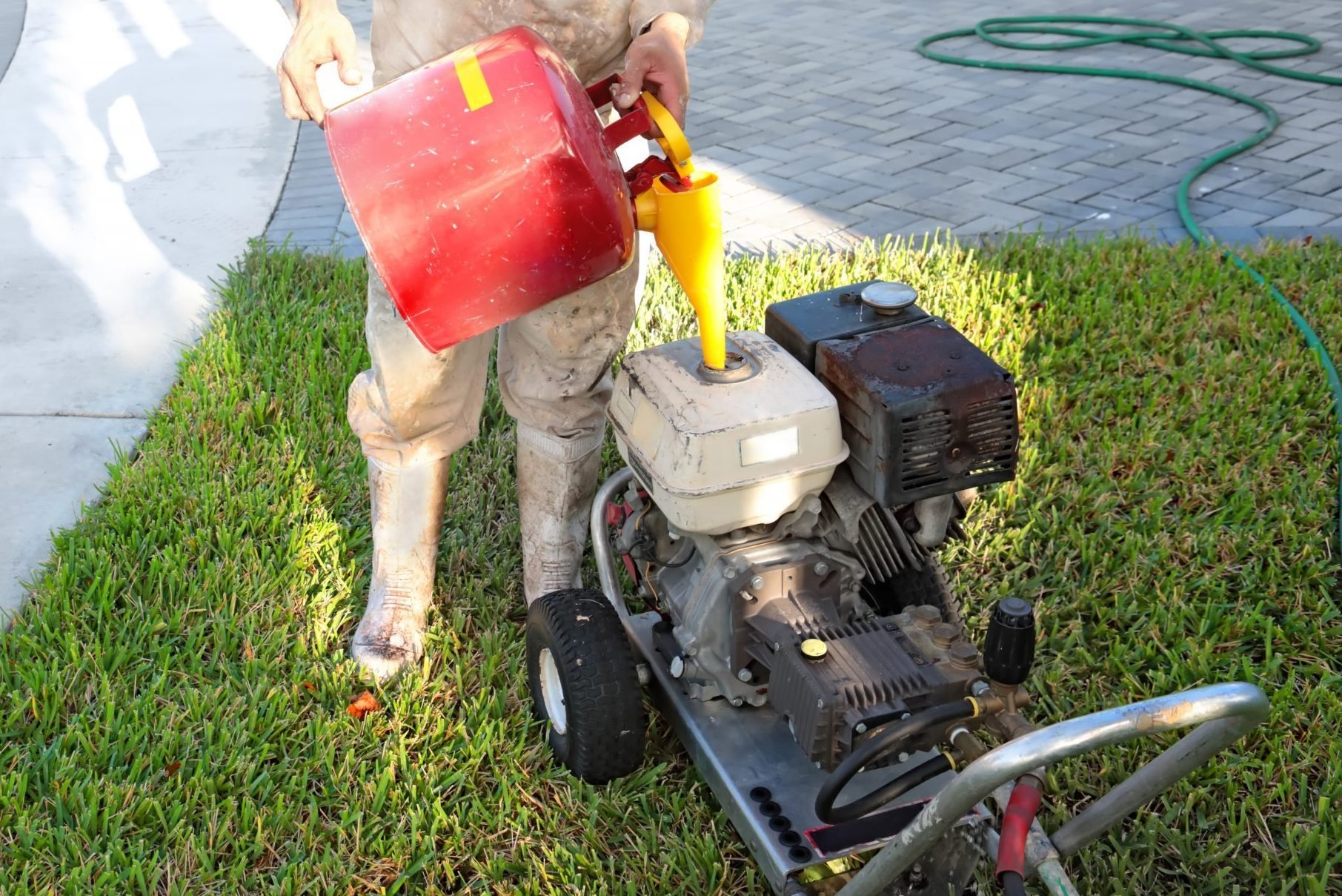Want to get the most from your gas-powered pressure washer this summer? Learn how to change the pump and engine oil to make it last a lot longer.

How To Check and Change Pressure Washer Pump Oil

If you own a gas-powered pressure washer, you probably know how amazingly useful it can be. I know of no faster way to wash a deck, patio, walkway or car than with the highly-pressurized water dispensed by one of these machines.
Like many time-saving devices, pressure washers need some ongoing care and maintenance to perform well. For gas-powered models, that starts with regular oil changes.
When I bought my first pressure washer a decade ago, I understood the need to change engine oil, but assumed it was the only thing I had to worry about. Turns out I was wrong. Gas-powered pressure washers need pump oil changes, too.
Pump oil is different from engine oil. It works to cool and lubricate a different but equally important part of your washer — the pump. Learning how to change both types of oil is vital to getting the best and longest performance from your pressure washer.
How Often Do You Change Oil in a Pressure Washer?
Probably only once a year. Check your owner’s manual for the manufacturer-recommended oil change frequency.
Online, you’ll find different recommendations for pressure washer engines and pump oil changes. Personally, I find changing both types once a year kept mine working great. However, I don’t use my washer that often.
If you put your pressure washer through lots of heavy use, changing the engine and pump oil twice a season would be wise. In my experience, changing oil more frequently than that is unnecessary.
How To Perform a Pressure Washer Oil Change
It’s easiest to change your pressure washer’s engine and pump oil at the same time. When that time comes, here’s what you’ll need.
Tools and materials
- A fresh jug of SAE 0w-30 synthetic motor oil, or whichever type your owner’s manual recommends.
- A fresh jug of SAE 30 non-detergent motor oil, or whichever type your owner’s manual recommends. (Be sure to get non-detergent oil.)
- Oil drain pan;
- Clean straight oil funnel;
- Clean slanted oil funnel;
- Socket wrench set.
Drain the old pump oil
- Find the pump casing on your pressure washer. Look for a rectangular or cylindrical aluminum or brass cast casing next to the engine. It should have several brass hex-head bolts.
- Find the oil drain plug bolt, a single hex-head bolt near the bottom of the casing. It will probably have a small plexiglass viewing window above or near it where you’ll see oil.
- Place an empty oil drain pan below your pressure washer, directly beneath the pump drain plug.
- Loosen the drain plug with a socket wrench and remove it. Try an 18-mm socket first.
- Allow all the old pump oil to drain into the pan. As the oil level gets low, loosen and remove a single bolt on the top face of the oil reservoir. Removing this vent bolt will relieve air suction so the last of the old oil can drain.
- Tilt your pressure washer to drain as much of the remaining oil as possible.
Add fresh pump oil
- Replace and tighten the pump’s drain plug bolt.
- Place a clean funnel into the vent hole where you removed the bolt, then carefully pour fresh non-detergent SAE 30 motor oil into the funnel.
- Continue until the oil level reaches slightly above the indicator line (or dot) of the viewing window. Then remove the funnel and replace the vent bolt.
Now let’s move on to the engine oil.
Drain the old engine oil
- Locate the oil drain plug near the bottom of the engine.
- Place your drain pan below the plug, then loosen and remove it with a socket wrench. Try a 10-mm first.
- Wait 10 minutes or so for all the old engine oil to drain out, then replace the drain plug bolt.
Add fresh engine oil
- Open the oil reservoir cap then place the end of your slanted oil funnel inside.
- Slowly pour fresh engine oil (I use 0w-30 synthetic) into the funnel. Stop every 10 seconds or so to check the oil level using the short dipstick on the underside of the reservoir cap.
- Stop when the dipstick indicates you’ve reached an ideal level.
Double-check oil levels
- Start and run your pressure washer for 20 seconds or so, then shut it down.
- Double-check the levels of the pump and engine oil. Chances are they will have dropped slightly.
- Add more pump and engine oil as needed.



















